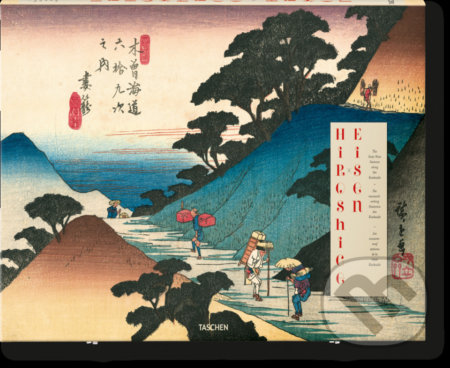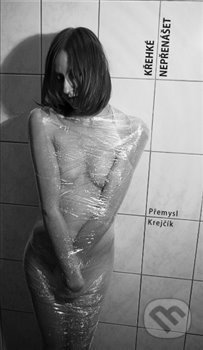
Hokusai
Knihu koupíte v
1 e-shopu
od
4 426 Kč
Pokud se vám po kliknutí na tlačítko "Do obchodu" nezobrazí stránka knihy ve vybraném e-shopu, je třeba vypnout AdBlock ve vašem prohlížeči pro naši stránku.
Návod na vypnutí je například na adrese https://o.seznam.cz/jak-vypnout-adblock/#1.
Krátký popis
From haunting ghosts to alluring women, or the landscapes of Mount
Fuji and the Tokaido road: the woodblock prints, paintings, and
book illustrations of Hokusai reveal a masterfully versatile
career. Packed with new photography and artworks from over 100
institutions worldwide, this is the most complete profile yetof
Japan’s preeminent artist. The most distinguished
artist of Edo-period Japan, explored like never before At
the age of six, Hokusai was said to have painted his first picture,
and a year after his death aged 89, his designs for illustrated
books were posthumously published. Tracing a long, prolific career,
this edition spans each of the artist’s creative phases: from the
actor portraits with which Hokusai started out to the 1,300 designs
carried out in his final years under the name Manji. Reproducing
746 woodblock prints, paintings, sketches, and book illustrations,
many of them in granular detail, this volume is comfortably the
most complete publication on perhaps Japan’s most famous artist.
Hokusai’s wide appeal as the recognizable figure of Japan’s Edo
period endures to this day: in March 2023, a version of his iconic
woodblock print Under the Wave off Kanagawa (or The Great Wave),
from his series Thirty-six Views of Mount Fuji, was auctioned for
2.76 million US dollars. Looking far beyond The Great Wave, this
monograph features both familiar and lesser known, rarely reprinted
artworks. Entitled The (almost) complete Hokusai, it offers an
unmatched variety of subjects and techniques: from a landscape of
the Kirifuri Waterfall to large-format maps of the Tokaido and
Kisokaido roads and the Boso Peninsula; spreads of illustrated
books, from his sensual, imaginative erotica (shunga) to drawing
manuals such as the fifteen-volume Hokusai manga; and several
depictions of animals, from his various woodblock print series on
birds and flowers to his later hanging scroll paintings of ducks
amidst a flowing stream and a tiger suspended in the snow. The
result of an extensive campaign of new photography, this edition
has sourced images of artworks from over 100 institutions
worldwide. These include museums and collections from Europe and
the United States to Japan, such as the Hiei Shrine at Kisarazu,
where a surviving panel painting of a boar hunt at the foot of
Mount Fuji was rephotographed for this edition. Accompanying texts
by Andreas Marks place Hokusai’s works in historical context,
exploring his influence on Western artists such as Degas and
Gauguin despite never leaving Japan himself. Combining rigorous
research on the authenticity of Hokusai’s art with extra-large
reproductions, including four fold-outs, The (almost) complete
Hokusai is both a visual carnival of Edo-period Japan and a
significant monograph of scholarly reference.
Vývoj ceny
Aktuální Ø cena knihy Hokusai je 4 426 Kč
Výběr knih autora
Andreas Marks
Zobrazit všechny knihy autora
Andreas Marks
Výběr knih vydavatele
Taschen
Zobrazit všechny knihy vydavatele
Taschen
Naše tipy
- Právě probíhající akce a slevy na knihy
-
Slevový kód
DOPZDA25AFKDKnihydobrovsky.cz | do 07.12.2025 -
Knihydobrovsky.cz | do 12.12.2025
-
Knihydobrovsky.cz | do 17.12.2025
-
Knihydobrovsky.cz | do 24.12.2025
-
Knihydobrovsky.cz | do 24.12.2025
-
Bookshop.cz | do 31.12.2025
- zobrazit všechny akce

















